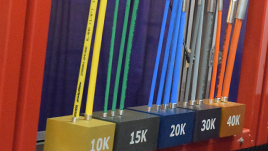Safety Section
Best Practices for Waterjet and Industrial Vacuum
The complete recommendations of WJTA's safety committees for waterjet and industrial vacuum are contained in the association's Orange Book and Blue Book manuals and accompanying videos. WJTA's manuals are the primary reference for waterjetting and vacuum operations throughout North America and other parts of the world. Make sure that you are referencing the current edition WJTA manuals:
- Industry Best Practices for the Use of High Pressure Waterjetting Equipment - Second Edition, 2021
- Recommended Practices for the Use of Industrial Vacuum Equipment - Fourth Edition, 2021
Visit the Online Store for details
High Pressure Injection
All fluid injection injuries have the potential to be severe. It is recommended that all members of the waterjetting team carry an easily accessible card outlining the possible nature of the injury.
Details on the Possible Nature of a Fluid Injection Injury
This patient may be suffering from a waterjet injury. Evaluation and management should parallel that of a gunshot injury. The external manifestations of the injury cannot be used to predict the extent of internal damage. Initial management should include stabilization and a thorough neurovascular examination. X-rays can be used to assess subcutaneous air and foreign bodies distant from the site of injury. Injuries to the extremities can involve extensive nerve, muscle, vessel damage, as well as cause a distal compartment syndrome. Injuries to the torso can involve internal organ damage. Surgical consultation should be obtained. Aggressive irrigation and debridement is recommended. Surgical decompression and exploration may also be necessary. Angiographic studies are recommended preoperatively if arterial injury is suspected. Bandages with a hygroscopic solution (MgSO4) and hyperbaric oxygen treatment have been used as adjunctive therapy to decrease pain, edema and subcutaneous emphysema. Unusual infections with uncommon organisms in immunocompetent patients have been seen; the source of the water is important in deciding on initial, empiric antibiotic treatment, and broad-spectrum intravenous antibiotics should be administered. Cultures should be obtained.
WJTA Industry Best Practices for the Use of High Pressure Waterjetting Equipment (Second Edition, January 2021), Section 4.1.1
Click Here for Purchase Waterjet Medical Alert Cards Click Here to Access Digital Medical Alert Cards
Vacuum Suction
Injuries caused by vacuum suction can be serious. It is recommended that all members of the vacuuming team carry an easily accessible card outlining the possible nature of the injury.
Details on the Possible Nature of a Vacuum Suction Injury
This patient may be suffering from a high pressure suction injury. An extreme pressure to a body part may lead to severe underlying internal body damage that cannot be seen from the outer skin. While bruising may vary, it can be also be delayed and should not be the primary basis for predicting internal damage. Case studies have shown a severe suction to a major body part (an entire arm for example) can lead to massive pooling of blood in that area, thereby causing circulatory collapse. Close monitoring of vital signs with ability for quick fluid replacement and resuscitation should be of high importance. Additional concerns would be a compartment syndrome to the affected muscular area, large hematomas that may need to be drained, and varying sizes of skin disruption/lacerations. Consider surgical consultation. Imaging should be considered to assess internal soft tissue damage. These injuries usually occur in non-sterile environments, lending themselves to the potential for contaminated wounds. Tetanus status may need to be updated.
WJTA Recommended Practices for the Use of Industrial Vacuum Equipment (Fourth Edition, August 2021), Section 2.1
Click Here for Purchase Vacuum Medical Alert Cards Click Here to Access Digital Medical Alert Cards
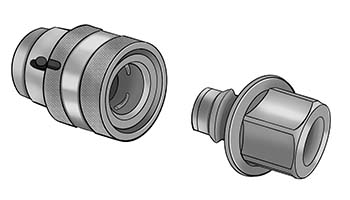
High Pressure Couplings
March 16, 2022 – Read an important safety alert regarding the use of non-threaded, push-to-connect couplings in high pressure waterjetting applications.
Click Here for More InformationOperator Training and Certification
WJTA's standardized training and certification for hydroblasters, vacuum operators and asset owners provide frequently updated curricula based on association best practices.
The program includes both computer-based eLearning and instructor-led training.
Click Here for More Information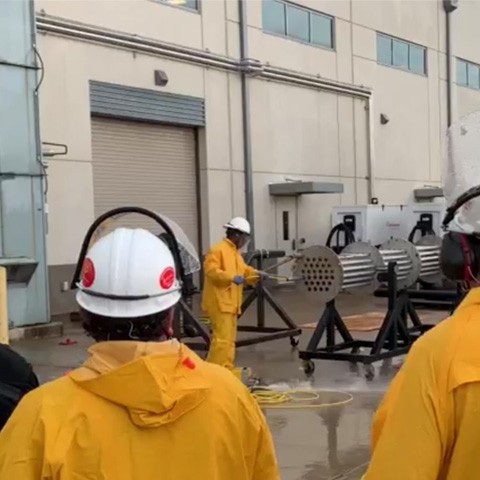
Additional Safety Initiatives
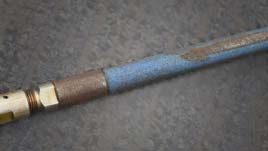
Hose Safety
The Association of Hose Assemblers and Distributors (NAHAD) has developed whitepapers several hose types of interest to WJTA members:
Hydroblast Hose Whitepaper Liquid Vacuum Hose Whitepaper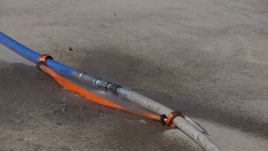
Incident Reporting Web Form
Help keep the industry safe by anonymously reporting incidents or near misses.
Learn MoreSafety Topics
A mission of WJTA is to provide information and resources to our membership in the areas of safety and technology. WJTA provides information on a multitude of tools manufactured by many companies as well as technical data and papers that can provide a roadmap for jetting and vacuuming applications.
While there has been significant improvement in equipment and methods, it still comes down to people applying the equipment safely in order to prevent accidents and provide maximum cleaning efficiency. Without question, safety must be at the forefront of every supervisor's and worker's focus. It is for this reason that we wish to provide our membership with real situations and incidents that have occurred as well as corrective actions to prevent reoccurence.
Following are examples of incidents that can be shared with your employees, colleagues or customers as safety meeting topics.
Incident: Water Cut to Upper Ankle and Shin
Incident: Water Puncture to Hand
We ask that you share incidents, accidents, and near misses that may have involved your business with the WJTA office. These will be published periodically in the Jet News with names, companies and any identifying information kept confidential. Click here for the confidential online Incident Reporting Form or email the WJTA office at wjta@wjta.org.
Updated April 12, 2024
